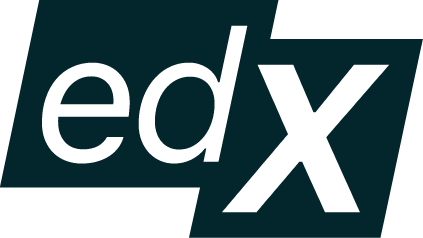
In the world of marketing, jobs are highly competitive. Whether you are applying for a role you found online, being referred by an acquaintance, or trying to impress a potential client, differentiating yourself from the competition is hard work. It requires an entire toolbox of items that includes your skills, interview prowess, resume, and online profiles.
One of the most important tools in your toolbox is a marketing portfolio. With a strong portfolio, you can introduce yourself and show off your best projects in a way that will impress employers and clients almost instantly. If you want to succeed in the marketing world, you’ll need a strong portfolio, and we’re here to help!
In this guide, you will learn how to build a portfolio that stands out and showcases your value as a marketing professional.
Let’s start with the basics and then dive into best practices. Feel free to jump to the topic that interests you most.
- What is a marketing portfolio?
- Why do employers care about my portfolio?
- How do I set myself up for success?
- Components of a competitive marketing portfolio
- Create your competitive marketing portfolio
What is a marketing portfolio?
A marketing portfolio is a website or web page that showcases your best work for potential employers or clients. The portfolio should give a brief introduction to your professional background and should house at least three strong case studies showing your marketing skills. The website itself is also a portfolio piece demonstrating your use of digital media, copy, and design.
Marketing professionals use their portfolios as a powerful tool to showcase their capabilities to potential employers and clients. It allows you to present concrete evidence of what you can do, giving employers a better understanding of your knowledge and skill sets. In addition to academic projects, your portfolio can include personal projects, letters of recommendation, and your resume.
The benefits of a marketing portfolio include:
- Showcasing your experience to potential clients or employers, helping them envision the projects you can deliver.
- Helping you stand out from the crowd and increasing your chances of being selected for the job.
- Building your personal brand and establishing credibility.
- Allowing you to negotiate higher compensation based on the complexity of your work and the depth of your knowledge and skills.
- Boosting your confidence in your marketing skills, particularly for entry-level professionals.
Why do employers care about my portfolio?
In today’s competitive job market, it is not enough to simply submit a resume and hope for the best. Employers receive hundreds, if not thousands, of resumes for a single opportunity, and they need a way to quickly identify the most qualified candidates. This is where your portfolio comes in.
Portfolios give employers a more comprehensive understanding of your abilities and potential by providing tangible examples of your work. It demonstrates your creativity, initiative, and attention to detail. It also provides a glimpse into your personality and work style, which can be invaluable when determining whether you are a value-add for a given role and company culture. In short, portfolios help employers make more informed decisions about which candidates to move forward in the hiring process.
Here are some key insights that employers gain from a portfolio:
Passion & enthusiasm — Academic and personal projects indicate your passion and commitment to continuous learning.
Relevant skills — Your relevant skills and proficiencies are clearly displayed, which gives employers an opportunity to assess your competencies quickly.
Problem-solving skills — By analyzing the projects and case studies presented, employers can gauge how effectively you approach challenges and devise solutions.
Communication & presentation skills — It highlights your ability to effectively communicate complex ideas through the clarity of project descriptions and documentation. Employers utilize these insights to see how you will interact with clients, team members, and stakeholders.
Expert advice
“Remember that your marketing portfolio website is a project in itself. It should showcase your writing and design skills, as well as your ability to connect with an audience. Strong portfolio design and content can compensate for some lack of experience, and could at least get you in front of a hiring manager to make your case.”
– Tramaine I., career expert at edX

How do I set myself up for success?
A good portfolio indicates that you have taken the time to represent yourself in the best possible light. It also shows that you are prepared to showcase your most relevant work in an aesthetically pleasing and logical way. As you are preparing to create your portfolio, we want you to concentrate on two tips that will set you up for success – showcase diversity and depth and focus on quality and impact:
- Showcase diversity and depth: Demonstrating a wide range of projects will help employers know the breadth and depth of your skills, which displays your versatility and adaptability.
- Focus on quality and impact: Prioritize quality and impact when selecting projects to include in your portfolio. Hone in on projects that hold personal significance or have made a notable impact. Demonstrate instances where you have surmounted significant challenges, applied inventive approaches, or attained remarkable results.
These tips will help you craft a portfolio that suits your needs and sets you up for success. Employers are more interested in seeing the value you bring and the real-world impact of your work than the number of projects you completed.
Components of a competitive marketing portfolio
Competitive marketing portfolios show that you bring value, skills, and passion to your work. So how exactly does one achieve this? Well, it differs by person and career goal, but there are a few criteria you don’t want to neglect. All marketing portfolios should include three basic components: an “About” section, work samples, and contact information.
About section
Your “About” section should provide a snapshot of who you are and the value you bring, including an overview of your professional background and credentials. Employers or clients also like to get a preview of your personality here. Do you have an interesting hobby or pet? Give a few details about yourself outside of work that demonstrate your creativity or work ethic.
Also, consider including a high-quality photo of yourself to help visitors make a connection with you. Depending on the role and industry you are seeking, a formal headshot or a lifestyle photo could be appropriate. It doesn’t need to be taken by a professional, but it should have good lighting and not be blurry or pixelated.
Here are a few additional tips for the “About” section:
- Include a concise tagline that represents your value and skills. Your tagline serves as a quick guide to understanding your specific strengths. As an illustration, consider: “Marketing professional specializing in social media marketing.”
- Include a minimum of 5 skills or tools listed as proficiencies. There’s no need to list the proficiency level of skills or technologies.
Expert advice
“The bio section is an opportunity to introduce yourself to potential employers and colleagues. Use this section to showcase the strengths and skills that are relevant to your target audience.”
– Ritu A., career expert at edX

Work samples and case studies
Work samples and case studies are the most important part of your marketing portfolio; visitors may skip to this section without even reading your bio. In the section below, we will provide thorough detail on the steps necessary to build your marketing portfolio.
Contact information
It is very important to have a clear, easy-to-find section that provides your contact details. This section should include an email address where you will respond quickly. Your phone number and city are optional – but don’t list your home address.
Other components that you may want to include (depending on your goals) are a resume, blog, testimonials, a services page if you offer freelance services, and links to your social media accounts. In marketing, you must demonstrate that you are social media savvy. However, only link to public accounts with content appropriate for a professional context.
Create your competitive marketing portfolio
Here are the steps you can take to build your marketing portfolio:
First, you’ll need to decide where to host your marketing portfolio. Now, if you’re tech-savvy, you can develop a custom website from scratch. For those of you just starting out, an easier route is to find a platform that has customizable options and snazzy design templates ready to use.
Popular platforms like WordPress and Google offer free hosting and beautiful design templates to start with. For budget-friendly options, consider Wix or Squarespace. Each of these options allows you to create a basic free or low-cost website with a subdomain (example: yourname.wix.com) that you can upgrade later.
Pro tip:
A marketing portfolio is usually presented as a web page or custom website; however, purchasing a domain can be expensive. A custom domain name makes a website appear more polished and professional, but it is not mandatory. An alternative is presenting your marketing portfolio as a slide deck. In fact, developing your portfolio as a slide deck is an excellent way to create a prototype for your future web-based portfolio. Other free portfolio options include social media sites like Instagram and blogging sites like Tumblr.
Before you start writing and building your work samples, take a moment to outline your site map, including your page titles. Most portfolio websites have a simple site structure with just three to five pages.
If you’re using a content management system, the easiest way to do this is to start with a template. Remember, a template is yours to customize – you aren’t locked into page titles or layouts – but you’ll save time by starting with something close to what you want.
For your About section, you have one shot to draw the reader in with clear, compelling copy and a power statement that depicts your skills and accomplishments. For best results, be concise, choose active verbs, and avoid adverbs and hyperbole.
Next, select 3-5 projects that represent your best work and showcase the diversity of your skills. Depending on your specialty area, this could include academic, professional, and personal projects such as:
- Social media campaigns
- Digital ad campaigns
- Email marketing campaigns
- YouTube videos
- Blog or website content
- Graphic design examples
Each project example should include an image, usually of the campaign collateral or an image of campaign analytics. Make sure the images can be enlarged enough for the user to read the content. For web content or campaigns that are live, you can link out to the campaign.
Write a description of your role in each project and describe your process and results in a concise manner. For the greatest impact, select portfolio projects that you can frame within the STAR method: Situation, Task, Action, and Result. Use numbers to highlight the impact of your work as needed.
By using this method to frame your case studies, you’ll tell a story of your specific role and actions you took to address the challenge, as well as measurable results that will speak to your knowledge of strategy and analytics.
Pro tip:
Think mobile-first. Today, it’s not enough to be mobile-friendly. In a world where everyone uses mobile devices for personal and professional purposes, design your marketing portfolio website for mobile first. Showing that you can design content for mobile is just one more way to show employers that you know your stuff.
Before you publish your site, solicit feedback from a handful of people invested in your success. Share your test site link with mentors, friends, and people you know in the industry. Ask for specific feedback and incorporate relevant feedback to improve your portfolio.
Now you are ready to publish your portfolio! Fight the urge to wait until your portfolio is perfect to publish. While it should be polished and free of errors, it will be a living document that you continue to update and improve over time. Remember to link your live portfolio to your social media platforms and resume.



